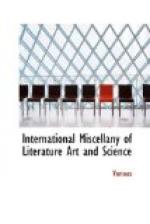Mr. Shee continued to produce for years with amazing readiness of hand and fertility in posture. People of all ranks in life went to Cavendish Square, and for a time Shee was in greater request than either Beechey or Hoppner, though not so much so as Lawrence, or even as Owen or Phillips somewhat later. Lord Spencer was the first nobleman who sat to him; and his example was followed by the Duke of Clarence, the Duke of Leinster, the Marquis of Exeter, and others. The ladies flocked less readily around him; for Lawrence had then, as he continued to have, the entire artist monopoly of the beauty of Great Britain.
Much to the surprise of his friends, and to the infinite wonder of some of his brethren in the Academy, Mr. Shee made his appearance as a poet by the publication, in 1805, of his “Rhymes on Art, or the Remonstrance of a Painter; in two parts, with Notes and a Preface, including Strictures on the State of the Arts, Criticism, Patronage, and Public Taste”: and the wonder had not ceased with Nollekins and Northcote, when, in 1809, he published a second poem, in six cantos, entitled “Elements of Art.” It is to these poems that Byron alludes in his “English Bards and Scotch Reviewers”:
“And here let Shee and Genius find
a place,
Whose pen and pencil yield an equal grace;
To guide whose hand the sister-arts combine,
And trace the poet’s or painter’s
line;
Whose magic touch can bid the canvas glow,
Or pour the easy rhyme’s harmonious
flow;
While honors, doubly merited, attend
The poet’s rival, but the painter’s
friend.”
The Quarterly was complimentary, but less kind to the painter than the noble lord.
Mr. Shee appears to have always evinced taste for the theater; and when his gravity of years and his position as a popular portrait-painter forbade his any longer entertaining a wish to appear there, he began to woo the dramatic Muse, and commenced a tragedy called “Alasco,” of which the scene was laid in Poland. The play was accepted at Covent Garden, but excluded, it was said, from the stage by Colman, who was then licenser. This is not strictly true. Colman objected to about eighty-five lines, which Shee refused to alter. Colman was equally obstinate; and Shee in 1824 printed his play, and appealed to the public against the licenser in a lengthy and angry preface. “Alasco,” notwithstanding, is still on the list of the unacted drama.




